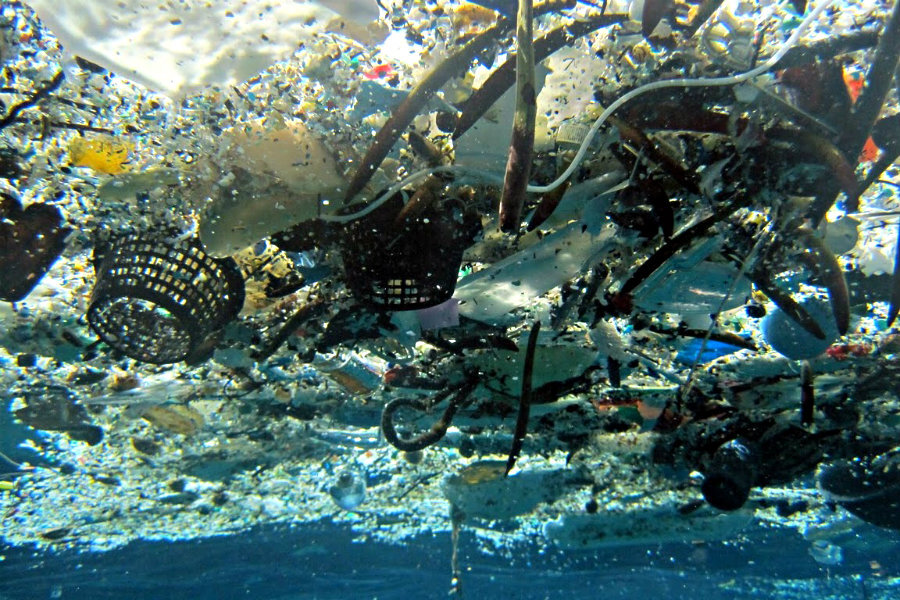Is biodegradable plastic a big lie?
Loading...
Plastics are durable, buoyant, and contribute to pollution, especially in the world's oceans, where they are known for forming massive rafts of plastic such as the Great Garbage Patch in the Pacific. But advances in biodegradable plastics have solved that problem, haven't they?
Maybe not, according to a new report by the United Nations, which finds that biodegradable plastics, commonly found in plastic bags and bottles, degrade at extremely slow rates.
According to the report, many biodegradable plastics require extremely high temperatures in order to break down at all, making the ocean an ideal place for so called biodegradable plastic to survive (and pollute) in perpetuity.
"A lot of plastics labelled biodegradable, like shopping bags, will only break down in temperatures of 50C [122 degrees F.] and that is not the ocean," UN Environment Program scientist Jennifer McGlade told The Guardian. "They are also not buoyant, so they're going to sink, so they're not going to be exposed to UV and break down."
Monday's report on plastic in the world's oceans was conducted by the world's top scientists, and funded by the UN. The 179-page report discusses all plastic pollution in the world's oceans, including the causes and effects of plastic pollution, and potential cures for floating plastic debris.
In 2010, around 8 million tons of plastic ended up in the world's oceans, according to a National Geographic article published last year. And that amount only stands to increase as the world's population grows and finds new uses for plastic products.
Affixing the term biodegradable to plastic products could even lead to increased levels of pollution, says the report, as people perceive these plastics as less harmful to the environment than regular plastics.
"Most plastic pollution in the ocean was not properly disposed of. Materials that only biologically degrade at 122 [degrees F.] are compostable but not biodegradable," Ohio State professor Frederick Michel told The Christian Science Monitor by e-mail, saying that the definition of biodegradable is semantically complicated.
"Polyethylene has been shown to biodegrade 0.1% in 10 years in a soil environment," Dr. Michel wrote. "Is it therefore biodegradable? Probably not."
The impact of plastic pollution is clear. Not only are massive rafts of plastic physically unattractive, but their components wreak havoc with ocean ecosystems.
Plastics, the report states, often snag animals like turtles and sharks. And when plastic weathers into smaller and smaller pieces, it can be ingested by birds, fish, and other aquatic wildlife, often killing them.
So what is the answer to our plastic problem, if not the biodegradable plastic we know today?
"To be a part of environmentally conscious organics waste management efforts, materials termed biodegradable should completely degrade to CO2 and materials found in nature during the time frame of a waste management process (two to six months for composting) or one year in the soil environment or ocean," says Michel. "There are specific types of bioplastic that have been demonstrated to be biodegradable under many different conditions."
Earlier this week, the Monitor reported on a beer company that claims to have created biodegradable six pack rings that could also be edible. If the rings are truly biodegradable and not harmful to be ingest, they could be a boon for environmentalists and beverage companies alike.
Other groups are working on synthesizing fully biodegradable plastics. In 2014, scientists at the Wyss Institute at Harvard developed a fully degradable plastic made from shrimp shells, a product initially called Shriik.
New plastic products and innovation could help change plastic use patterns for the future. Yet, the UN report states, the most important step that countries and individuals must take in the short term to mitigate plastic pollution in the ocean is to dramatically improve waste management and collection practices to keep plastics of any type out of the world's waters in the first place.







